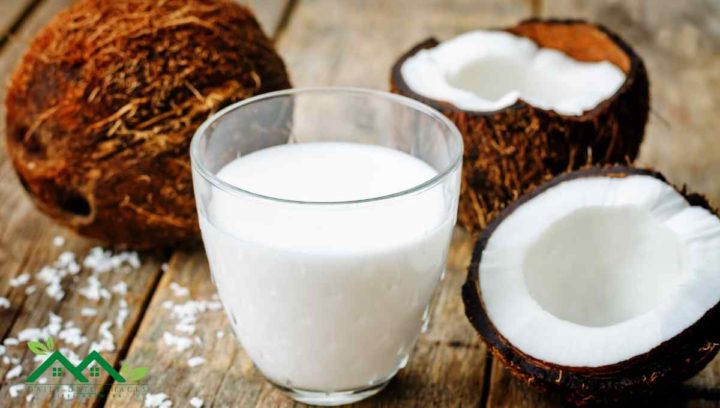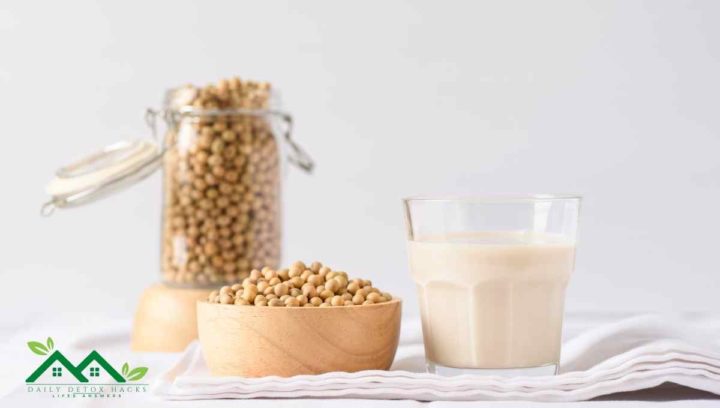Whole Milk Substitute

Top 11 Substitutes for Whole Milk in 2024
Whole milk has been an excellent source of nutrients like calcium and vitamin D, but it can also be a source of saturated fat.
That’s why many people are looking for whole milk substitutes that provide the same nutrition without the extra saturated fat.
If you would like to try different types of milk, we have some good whole milk alternative options for you. Some are made from skim milk, while others are made from soy or almond milk.
Each has its pros and cons, so choosing the one that’s right for you is essential.
TLDR: The Top Whole Milk Substitutes, that Are Readily Available in Any Pantry Are Half-and-Half, Low Fat Milk And the Top Non-Dairy Alternative to Whole Milk Is Coconut Milk
What is Whole Milk?
Whole milk is the type of milk that contains all of the nutrients found in milk. In addition, whole milk can be a great source of calcium, vital for strong bones and teeth. So it is a good option if you’re looking for a nutritious drink.
Whole milk can be enjoyed on its own or used in recipes. For example, it can be added to cereal or oatmeal, used in baking, or made into smoothies, milkshakes, or other delicious and creamy desserts.
Best Whole Milk Substitutes
1. Half-and-Half
Here are a few reasons why half-and-half may be the best substitute for whole milk. For one, it has similar fat content to whole milk so it will give your dishes the same creamy texture and flavor. Plus, half-and-half is already diluted with water, so you won’t need to add as much liquid to your recipe.
This is also helpful if you are looking to replace milk with water in making Pancakes
However, it is slightly lower in protein than whole milk, so it may not be the best choice for baking. And since it is already diluted, you may need to add a bit more half-and-half to your recipe to get the same consistency as you would with whole milk.
Overall, half-and-half is an excellent substitute for whole milk in many recipes. Just be sure to keep these few things in mind when making the switch.

2. Light Cream
Light cream is often used as a whole milk substitute. One advantage of using light cream is that it contains less fat than whole milk. Therefore, it can benefit those trying to watch their fat intake. Light cream also has a higher protein content than whole milk.
However, one disadvantage is that it contains more calories than whole milk. This can be a problem for those who are trying to lessen or maintain their current weight. Another disadvantage of using light cream is that it can make baked goods and other dishes more dense and heavy. Again, this can be a problem for those looking for lighter, fluffier results.
It is essential to weigh the pros and cons before deciding which option is best for you.
3. Heavy Cream
There are many reasons why heavy cream is often used as a whole milk substitute. For one, it contains more fat than whole milk, making it richer and creamier. This is good if you want to add more creaminess to a recipe or dish. Heavy cream will also thicken more than whole milk, which can be helpful in specific recipes.
On the other hand, there are also some drawbacks to using heavy cream as a whole milk substitute. For one, it’s higher in calories and fat than whole milk. Additionally, it can be more difficult to find heavy cream that is organic or hormone-free.
Overall, heavy cream can be an excellent whole milk substitute if you’re looking for something richer and creamier. However, it’s essential to know the potential drawbacks before using them in your recipes.

4. Low-Fat Milk
Low-fat milk is the better choice for most people as a whole milk substitute. Why? Whole milk contains higher saturated fat than low-fat milk, and saturated fat has been linked to heart disease and other health problems. Low-fat milk also has more calcium and vitamin D than whole milk, two essential nutrients for strong bones and teeth.
So, if you’re looking for the best milk for your health, low-fat milk is the way to go. But remember, moderation is vital in choosing your whole milk substitute. Too much of any kind of milk can be bad for your health, so enjoy it in moderation.
5. Skim Milk
Skim milk is another way to go if you’re looking for a whole milk substitute. Skim milk is made by removing the cream from whole milk, lowering the fat content.
Despite having less fat, skim milk still has the same nutrients as whole milk. In addition, it’s a good source of calcium, protein, and vitamin D.
One downside of skim milk is that it doesn’t have the same rich flavor as whole milk. But if you’re looking to cut down on calories and fat, skim milk is the perfect choice as a whole milk substitute.
6. Sour Cream
Sour cream is often used as a substitute for whole milk. It has a similar consistency and can be used in many recipes that call for milk. One pro of using sour cream as a substitute for whole milk is that it is lower in fat. It is also a good source of calcium and vitamin D, which are essential for bone health.
One con of using sour cream as a substitute for whole milk is that it is higher in calories and has higher saturated fat than whole milk, so it is not the best choice if you are trying to reduce your cholesterol levels.
If you are considering using sour cream as a substitute for whole milk, weigh the pros and cons to decide if it is the right choice for you.
7. Coconut Milk
Coconut milk has a creamy texture and a slightly sweet taste that is perfect for baking, cooking, and even drinking on its own. It is also packed with nutrients like vitamins C, E, and B, as well as minerals like iron and magnesium. Plus, it’s a good source of healthy fats that can help boost your metabolism and promote weight loss.
Though it doesn’t contain as much protein as cow’s milk, it’s not ideal for growing children or athletes who need to build muscle. Plus, coconut milk can spoil more quickly than cow’s milk, and it’s high in saturated fat. Coconut Milk is also used a replacement for coconut oil in baking.
Overall, coconut milk as an alternative to whole milk can be used in many different ways in delicious and nutritious recipes. Just be sure to keep an eye on the expiration date and consume it in moderation if you’re concerned about your cholesterol levels.
8. Oat Milk
If you’re thinking if you can choose oat milk as your go-to whole milk substitute, here are the reasons why you can. For one, it has lower calories and fat compared to traditional whole milk. Additionally, oat milk is known for being a great source of fiber and protein, and it’s naturally lactose-free. Additionally, it is a good choice for vegans and vegetarians as it does not contain animal products.
Of course, there are also some drawbacks to using oat milk. It can be more expensive than other types of milk. Additionally, some people find that oat milk doesn’t have the same rich flavor as whole milk.
Overall, oat milk can be an excellent choice for those looking for a healthy and delicious alternative to whole milk.

9. Soy Milk
Soy milk can be a great source of protein and other nutrients. Soy milk also has a very neutral taste, so it can be used in various recipes without affecting the final flavor. Additionally, soy milk has lower calories and fat than whole milk, making it a healthier choice for those watching their weight.
However, there are also some drawbacks to soy milk. First, it is not as rich and creamy as whole milk. Second, soy milk does not contain any cholesterol.
Overall, soy milk can be considered an excellent choice as a whole milk substitute, but it is essential to check all the pros and cons before making a decision.
10. Almond Milk
Almond milk has often been touted as the best substitute for whole milk. First, it has lower calories and fat than whole milk. It is a good source of calcium, vitamin D, and E and is free of cholesterol and lactose, so it’s an excellent choice for those with these dietary restrictions.
While some of the cons are almond milk doesn’t contain as much protein as whole milk, so it may not be the best choice for those who need to increase their protein intake. It also doesn’t contain any of the beneficial fatty acids found in whole milk, so it’s not as nutritious. In addition, some people may be allergic to almonds, which are also more expensive than whole milk.
So, what’s the verdict? Is almond milk the best substitute for whole milk? It depends on your individual needs and preferences.
- Yogurt
When it comes to finding the best whole milk substitute, yogurt is a great option. It has all of the nutritional benefits of milk without fat and calories. Plus, yogurt is a good source of protein and calcium.
Keep in mind when choosing a yogurt, first, make sure to choose a yogurt that is plain and unsweetened. Second, look for yogurt with live and active cultures. These cultures can help keep your gut healthy and prevent diseases.
So, yogurt is a great option if you’re looking for a healthier alternative to whole milk. Just be sure to choose wisely and look for a yogurt that fits your dietary needs.
Which percent milk is closest to whole milk
The closest percentage is whole milk which is 3.25% of milk fat content. Other milk percentages are
- low fat milk being 1% milk fat.
- skim milk is under 0.5% milk fat.
Conclusion
Many whole milk substitutes are available on the market, and choosing the best one can be difficult. However, by considering the type of milk you need, the fat content, and the price, you can narrow down your options and choose the best whole milk substitute for your needs.
